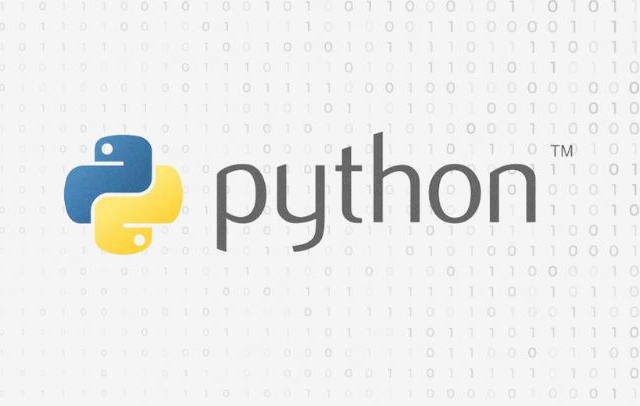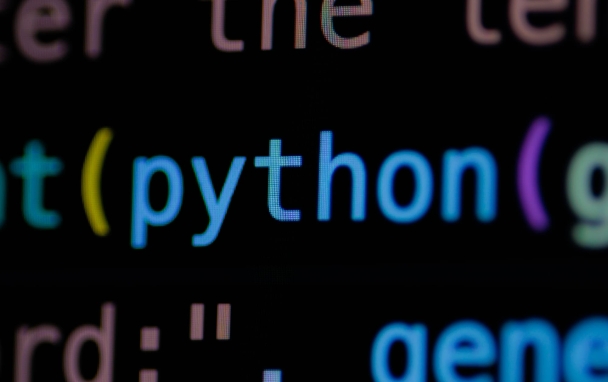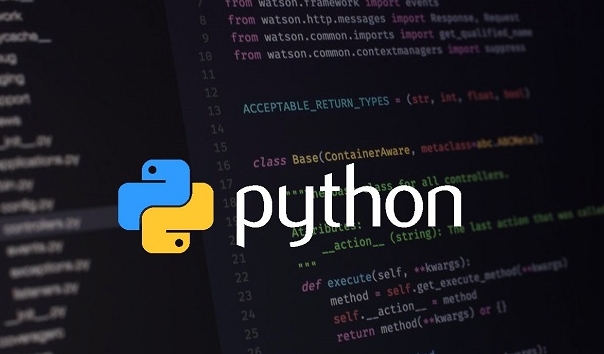The main difference between class method and static method is parameter passing and purpose. ① class method The receive class as the first parameter (cls), which can be used to access class properties and methods, which are suitable for factory methods or class-level operations; ② static method does not receive automatically passed parameters, but is more like an ordinary function bound to a class, suitable for tool functions or logical encapsulation; ③ class method supports inheritance and rewrite and can return subclass instances, while static method also supports rewrite, but does not involve class or instance state; ④ If the method needs to call the class itself data, select class method. If it is only logical classification and has no class structure, select static method.

In Python object-oriented programming, class method and static method are two easily confusing concepts. They can all be defined in classes and do not depend on the specific state of the instance, but there are obvious differences in uses and behavior.

Simply put:

-
class methodreceives a class as an implicit parameter (usually namedcls) and is suitable for making factory methods or handling class-related logic. -
static methoddoes not receive classes or instances as parameters, but is more like a normal function placed in a class, used to organize code structures.
Let’s take a look at the differences between the two from several practical perspectives.
What is class method?
class method is a method defined with @classmethod decorator, and its first parameter is the class itself (convention is cls ). This feature makes it very suitable for class-based operations, such as creating instances of different configurations.

For example:
class Person:
def __init__(self, name):
self.name = name
@classmethod
def from_full_name(cls, full_name):
first, last = full_name.split()
return cls(f"{first} {last}")
p = Person.from_full_name("John Doe")
print(p.name) # output John Doe In this example, from_full_name is a typical factory method. No matter what subclass you inherit Person to create, it will automatically use that subclass to create instances.
Common uses include:
- Class-level constructor
- Modify class attributes
- Generate different instances according to different inputs
What does static method do?
static method is defined with the @staticmethod decorator and does not receive any automatically passed parameters (no self or cls ). It is essentially a "function bound to a class" that will not affect the state of the class or instance.
Let's take a simple example:
class MathUtils:
@staticmethod
def add(a, b):
return ab
result = MathUtils.add(3, 5)
print(result) # output 8 Here the add method is just a general addition function, and is placed in MathUtils class just to organize the code structure.
Use scenarios include:
- Tool functions have no direct relationship with the class itself
- Logically belongs to a class, but does not need to access the class or instance data
- Improve code readability and module
The key difference between class method vs static method
| Features | class method | static method |
|---|---|---|
| Whether to receive class parameters | ? Automatically receive cls
|
? Not accepted |
| Whether to access class attributes/methods | ? Can be accessed through cls
|
? Inconvenient to access directly |
| Whether to support inheritance rewriting | ? Support | ? Support |
| Main uses | Factory methods, class-level operations | Tool functions, logical encapsulation |
You can understand this:
- If you need to call other methods or properties of the class itself inside the method, give priority to
class method - If this method is just placed in a class by the way and has no substantial relationship with the class, then use
static method
Which method is more recommended?
There is no absolute answer to this question, it depends on the specific needs. But a few practical suggestions can be remembered:
- When you want to return an instance of the current class or its subclass, use
class method - If the method is just some auxiliary logic and does not involve data from classes or instances, use
static method - Don't stuff all tool functions into the class, as it will reduce the clarity of the code
Basically that's it. Although these two concepts look similar, they are clearly used in actual development. Understanding their differences will help write clearer, more maintainable object-oriented code.
The above is the detailed content of Python class method vs static method. For more information, please follow other related articles on the PHP Chinese website!

Hot AI Tools

Undress AI Tool
Undress images for free

Undresser.AI Undress
AI-powered app for creating realistic nude photos

AI Clothes Remover
Online AI tool for removing clothes from photos.

Clothoff.io
AI clothes remover

Video Face Swap
Swap faces in any video effortlessly with our completely free AI face swap tool!

Hot Article

Hot Tools

Notepad++7.3.1
Easy-to-use and free code editor

SublimeText3 Chinese version
Chinese version, very easy to use

Zend Studio 13.0.1
Powerful PHP integrated development environment

Dreamweaver CS6
Visual web development tools

SublimeText3 Mac version
God-level code editing software (SublimeText3)

Hot Topics
 How to handle API authentication in Python
Jul 13, 2025 am 02:22 AM
How to handle API authentication in Python
Jul 13, 2025 am 02:22 AM
The key to dealing with API authentication is to understand and use the authentication method correctly. 1. APIKey is the simplest authentication method, usually placed in the request header or URL parameters; 2. BasicAuth uses username and password for Base64 encoding transmission, which is suitable for internal systems; 3. OAuth2 needs to obtain the token first through client_id and client_secret, and then bring the BearerToken in the request header; 4. In order to deal with the token expiration, the token management class can be encapsulated and automatically refreshed the token; in short, selecting the appropriate method according to the document and safely storing the key information is the key.
 How to test an API with Python
Jul 12, 2025 am 02:47 AM
How to test an API with Python
Jul 12, 2025 am 02:47 AM
To test the API, you need to use Python's Requests library. The steps are to install the library, send requests, verify responses, set timeouts and retry. First, install the library through pipinstallrequests; then use requests.get() or requests.post() and other methods to send GET or POST requests; then check response.status_code and response.json() to ensure that the return result is in compliance with expectations; finally, add timeout parameters to set the timeout time, and combine the retrying library to achieve automatic retry to enhance stability.
 Python variable scope in functions
Jul 12, 2025 am 02:49 AM
Python variable scope in functions
Jul 12, 2025 am 02:49 AM
In Python, variables defined inside a function are local variables and are only valid within the function; externally defined are global variables that can be read anywhere. 1. Local variables are destroyed as the function is executed; 2. The function can access global variables but cannot be modified directly, so the global keyword is required; 3. If you want to modify outer function variables in nested functions, you need to use the nonlocal keyword; 4. Variables with the same name do not affect each other in different scopes; 5. Global must be declared when modifying global variables, otherwise UnboundLocalError error will be raised. Understanding these rules helps avoid bugs and write more reliable functions.
 Python FastAPI tutorial
Jul 12, 2025 am 02:42 AM
Python FastAPI tutorial
Jul 12, 2025 am 02:42 AM
To create modern and efficient APIs using Python, FastAPI is recommended; it is based on standard Python type prompts and can automatically generate documents, with excellent performance. After installing FastAPI and ASGI server uvicorn, you can write interface code. By defining routes, writing processing functions, and returning data, APIs can be quickly built. FastAPI supports a variety of HTTP methods and provides automatically generated SwaggerUI and ReDoc documentation systems. URL parameters can be captured through path definition, while query parameters can be implemented by setting default values ??for function parameters. The rational use of Pydantic models can help improve development efficiency and accuracy.
 Python for loop with timeout
Jul 12, 2025 am 02:17 AM
Python for loop with timeout
Jul 12, 2025 am 02:17 AM
Add timeout control to Python's for loop. 1. You can record the start time with the time module, and judge whether it is timed out in each iteration and use break to jump out of the loop; 2. For polling class tasks, you can use the while loop to match time judgment, and add sleep to avoid CPU fullness; 3. Advanced methods can consider threading or signal to achieve more precise control, but the complexity is high, and it is not recommended for beginners to choose; summary key points: manual time judgment is the basic solution, while is more suitable for time-limited waiting class tasks, sleep is indispensable, and advanced methods are suitable for specific scenarios.
 Python for loop over a tuple
Jul 13, 2025 am 02:55 AM
Python for loop over a tuple
Jul 13, 2025 am 02:55 AM
In Python, the method of traversing tuples with for loops includes directly iterating over elements, getting indexes and elements at the same time, and processing nested tuples. 1. Use the for loop directly to access each element in sequence without managing the index; 2. Use enumerate() to get the index and value at the same time. The default index is 0, and the start parameter can also be specified; 3. Nested tuples can be unpacked in the loop, but it is necessary to ensure that the subtuple structure is consistent, otherwise an unpacking error will be raised; in addition, the tuple is immutable and the content cannot be modified in the loop. Unwanted values can be ignored by \_. It is recommended to check whether the tuple is empty before traversing to avoid errors.
 How to parse large JSON files in Python?
Jul 13, 2025 am 01:46 AM
How to parse large JSON files in Python?
Jul 13, 2025 am 01:46 AM
How to efficiently handle large JSON files in Python? 1. Use the ijson library to stream and avoid memory overflow through item-by-item parsing; 2. If it is in JSONLines format, you can read it line by line and process it with json.loads(); 3. Or split the large file into small pieces and then process it separately. These methods effectively solve the memory limitation problem and are suitable for different scenarios.
 What are python default arguments and their potential issues?
Jul 12, 2025 am 02:39 AM
What are python default arguments and their potential issues?
Jul 12, 2025 am 02:39 AM
Python default parameters are evaluated and fixed values ??when the function is defined, which can cause unexpected problems. Using variable objects such as lists as default parameters will retain modifications, and it is recommended to use None instead; the default parameter scope is the environment variable when defined, and subsequent variable changes will not affect their value; avoid relying on default parameters to save state, and class encapsulation state should be used to ensure function consistency.






